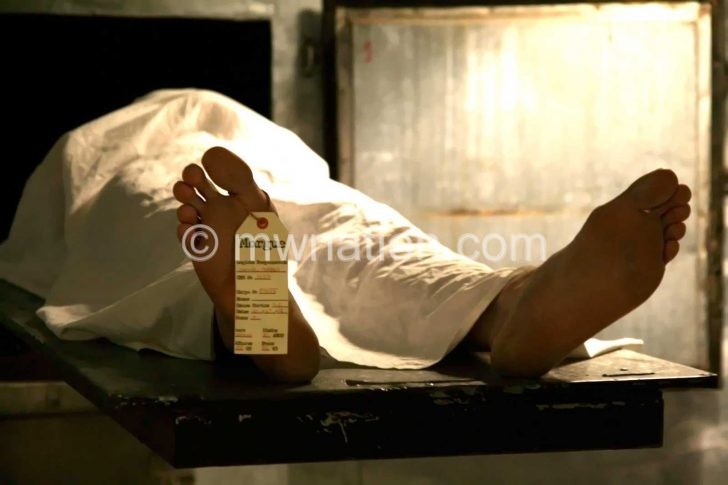The K24 billion Blantyre Water Board (BWB) Likhubula Water Supply project has become a ‘white elephant’, pumping less than 20 percent of the water it was designed to supply, barely three years after it was commissioned.
A well-placed source in the water sector confided in Weekend Nation that the project implemented with a Line of Credit from Exim Bank of India, worth $23.5 million (K24.1 billion at the current exchange rate), is supplying about four million litres of water instead of the 20 million litres it was designed to pump per day.
Part of the Likhubula Water project pipeline
Said the source: “Since the project was commissioned in 2019, it has never pumped 20 million litres, and sometimes it pumps less than 20 percent.”
BWB chief executive officer Robert Hanjahanja confirmed in an interview yesterday that the board was facing glitches, but he attributed the low capacity challenges to, among others, weather conditions.
He, however, claimed the project, expected to benefit around 300 000 residents in Blantyre City and surrounding areas such as Chiradzulu and Thyolo, is supplying 10 million litres of water or 50 percent of the volumes it was designed for. The project taps water from Likhubula River in Mulanje Mountain.
Currently, BWB daily pumps around 101 million litres of water from Walkers Ferry and Mudi Dam against a daily demand of 123 million litres and the Likhubula project was expected to add 20 million litres of water into the supply area.
According to the project overview on BWB’s website, it was specifically to benefit consumers around Limbe, Bangwe, Namiyango, Mzedi, BCA Hill, Chigumula, Nguludi, Chiradzulu and the Malawi University of Science and Technology.
Apart from ensuring that water is available for at least 23 hours a day for all people supplied by the board, the project was also expected to help BWB reduce the cost of electricity as water would gravitate for about 44 kilometres from the source.
For the past few weeks, Blantyre City faced intermittent water supply with households going five days without a drop of water, a development Hanjahanja attributed to a series of vandalism acts to the main pipe by communities in Mulanje.
He said the major challenge facing the project was low levels of water in Likhubula River, the only intake, during the dry season.
“But we now plan to construct a dam on the river, similar to what government did at Mulunguzi River in Zomba for the Southern Region Water Board (SRWB).
“However, this dam will be multipurpose and slightly bigger. It will not only be used by BWB but even SRWB will use it to supply water to its Mulanje water users but the larger part will be used by BWB.”
But he could not also indicate the capacity of the dam, saying that would be known once the design, geological and other surveys have been completed.
“We are looking for funding so that we can do the design which will reveal to what extent we can go in terms of capacity,” he said.
On the Exim Bank loan, Hanjahanja said: “We have a healthy relationship with the bank. When we start paying the loan it will be factored through the tariffs. The loan is spread over a long period of time so that customers do not actually feel the burden.”
But a water resources specialist Jerry Ben Sakala said the challenges BWB is facing may be due to environmental degradation as well as lack of proper feasibility assessment to tap water from Likhubula River.
He said the low volumes could be that the source is affected seasonally as the catchment relies on rainfall to build up, adding that this could be aggravated with degradation happening in the catchment area.
Said Sakala: “The initial [feasibility] assessment study may have overlooked the environmental issue. They may also not have done a thorough environmental assessment and that with time some environmental changes have affected the whole system.”
He said there was need to identify an alternative source of water to be developed and connected to the Likhubula system to ably tap enough water.
“Otherwise, that single source may not be sufficient. There is also need to have a deliberate effort to ensure the catchment retains as much water as possible from runoff so that during the rainy season not all is rundown the mountain.”
On her part, Water for People director of influence and scale Kate Harawa, observed that the challenges the system is facing may be due to some “miscalculations on environmental degradation” currently happening around Mulanje Mountain.
She also said there could be issues of pressure on water resources management considering Likhubula River has many other users such as SRWB.
“When you consider all those multiple users and how they share the resources, I think that could be another reason for the challenges, but above everything else, the issue of environmental degradation contributes heavily to the problem.”
Consumers Association of Malawi executive director John Kapito wondered why consumers continue getting a raw deal despite the huge investments in infrastructure within the water boards.
The project implemented under the Democratic Progressive Party administration, started in December 2017, after resistance from the community led by the Citizens for the Protection of Mulanje Mountain.
Former President Peter Mutharika launched the construction work in November 2016 and commissioned it on November 6 2019.
The post Dry taps from K24bn project appeared first on The Nation Online.
 Moni Malawi
Moni Malawi 

